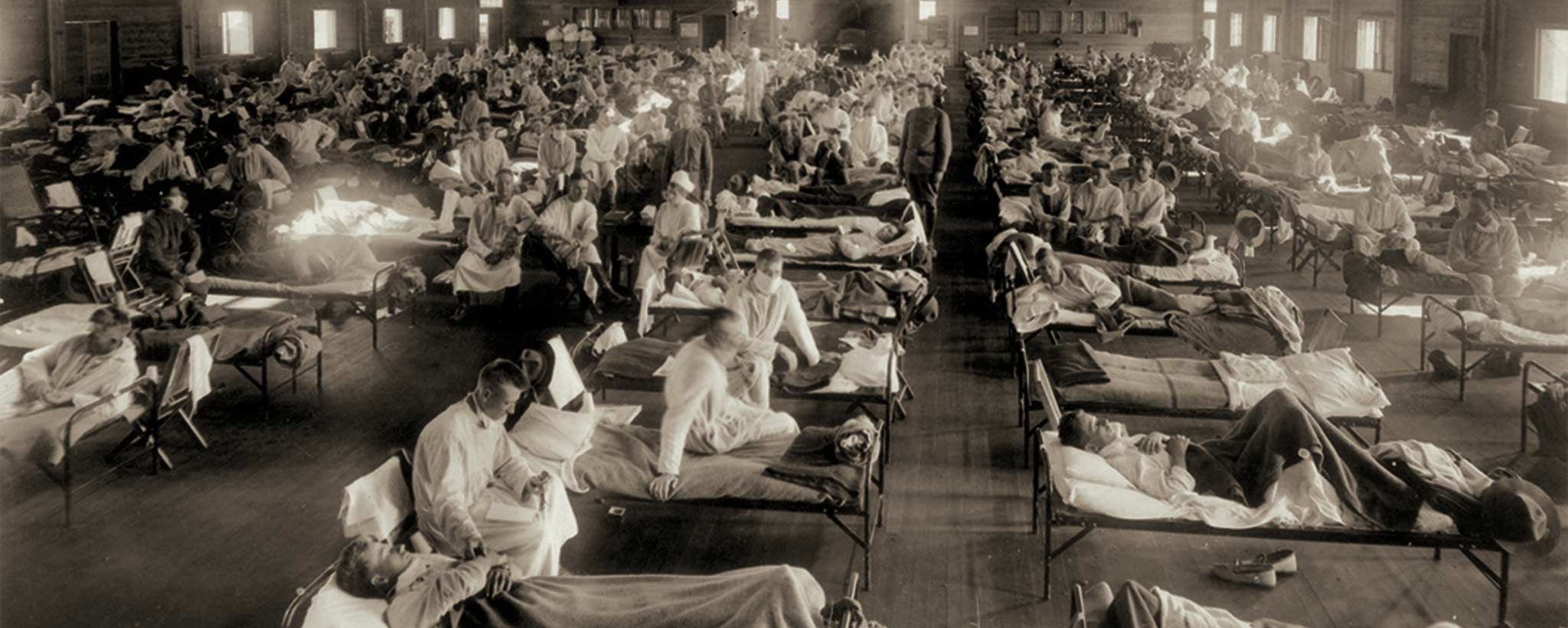Genetically modified organisms are in our refrigerators, on our shelves, and likely in our digestive systems right now.
Consumers Are Collateral Damage
It must be natural. It came from the ground, right? Eschewing the microwave variety, we heat our popcorn kernels in a pot of peanut oil over an open flame, then lightly sprinkle them with sea salt.
We take pride in the fact that our refrigerated cheese eventually grows mold,§ unlike the highly processed American Cheese with its sugars, artificial colors, flavorings, and preservatives. Kitchen shelves are free from canned foods. That pretty much does it. Now we’re eating healthy, right? Wrong.
You have heard the term “processed food.” Food processing companies use more than 6000 additives to color, stabilize, emulsify, bleach, texturize, soften, sweeten, flavor, mask odors, and preserve the food we’re putting in our bodies. Yes, some of those bright colors, aromas, and stabilizers are put there because we would find aging food repulsive to consume in its natural state.
Though appearing to be the greatest offenders, processed foods are not limited to boxed or canned goods. It comes in bags and shrink-wrapped packages, too. Just two ounces of processed, non-certified-organic meat a day means you are 42 percent more likely to get heart disease and 19 percent more likely to get diabetes.
Without “grass-fed” labeling, most of the steer meat has been fed corn byproducts mixed with dead animal parts and steroids designed to prematurely end the steer’s life at six months. Without USDA Choice certification, fish is more of a gamble than beef, pork, or chicken. The USDA has approved of farms raising genetically engineered salmon. [2-4]
Unlike health departments in most countries, the United States currently is not compelled to label GE foods for consumers.
As you roll your shopping cart down the aisles, 7 out of 10 products are likely genetically modified. It doesn’t matter whether it’s meat, packaged goods, fruits, or vegetables. The primary offenders make up fundamental ingredients in the food chain.
| Some Genetically Engineered Food in the U.S. | |
|---|---|
| Ingredient | Percentage |
| Corn* | 85% |
| Cotton* | 88% |
| Soybeans | 91% |
| Sugar Beets | 95% |
| *Cottenseed oil is used in many food products, as is corn in frozen foods, canned goods, snack foods, corn oil, corn meal, corn feed, corn starch, and high-fructose corn syrup. | |
Chemicals Within Our Fruits And Vegetables

Sadly, many people know the nation’s food supply is unhealthy; they just prefer not to think about it. But ignorance is not bliss. Have you seen the documentary entitled Food, Inc. (2008)? Put it on your Netflix or Amazon Prime viewing list. It’s an eye-opener for the naive who assume that the USDA is vigilantly guarding the nation’s food supply. Here’s an excerpt from the plot summary at IMDb.com:
“Health and safety (of the food itself, of the animals produced themselves, of the workers on the assembly lines, and of the consumers actually eating the food) are often overlooked by the companies, and are often overlooked by the government in an effort to provide cheap food regardless of these negative consequences. Many of the changes are based on advancements in science and technology, but often have negative side effects.” [3]
The Hidden GMOs
| Ingredient | What It Is | Likely In Your |
|---|---|---|
| Glucose | Simple sugar chemically made from corn | Soft drinks, baked goods |
| Lecithin | An emulsion made from soy | Chocolate, ice cream |
| Maltodextrin | Additive made from cornstarch | Instant soup, crackers, snacks |
Have a Bite of Monsanto

Introduced into the food supply in 1990, multi-national Monsanto’s GM Bt corn is equipped with a gene from soil bacteria called Bt or Bacillus thuringiensis. This produces the Bt-toxin in the corn used by 90 percent of the farmers. The pesticide breaks open the stomach of certain insects and kills them.
Monsanto and the USDA swore that the Bt-toxin produced inside the GE plant would be destroyed in the human digestive system. Unfortunately, they have been proven wrong. Not only is Bt corn producing resistant “superpests,” researchers have also found that the Bt toxin can adversely affect human health. [5]
In 2011, doctors at Sherbrooke University Hospital in Quebec, Canada, found Bt-toxin in the blood of:
- 93 percent of pregnant women tested
- 80 percent of the umbilical blood in their babies
- 67 percent of non-pregnant women

Many homeowners use Roundup® in their gardens to kill weeds and preserve grass. In agriculture, the counterpart is Roundup Ready® seed, genetically modified organisms (GMO). Soybeans, corn, tomatoes, and cotton are not the only GMO crops.
“There’s nothing they are leaving untouched: the mustard, the okra, the bringe oil, the rice, the cauliflower. Once they have established the norm, that seed can be owned as its (Monsanto’s) property, royalties can be collected,” says Vandana Shiva, Ph.D. GMO, foods regarded by the USDA as “principle of substantial equivalents,” have been globally adopted. [6-8]

Dioxin is a member of the class of persistent organic pollutants. It is produced through combustion, in the bleaching of paper/pulp, or in the chemical manufacturing process. In regards to Agent Orange, dioxin was a by-product of the deliberately accelerated production of the herbicide 2,4,5-T. Specifically, the dioxin contaminating Agent Orange was 2,3,7,8-Tetrachlorodibenzodioxin (TCDD), which is the most toxic of all the dioxins and dioxin-like compounds.
The average person in an industrialized nation has 3-7 pg/g (picograms/gram) of TCDD in their blood, primarily through environmental exposure to dioxin from combustion, and by eating dioxin-contaminated meat, dairy, and fish. [7]
As Roundup loses effectiveness, a herbicide called 2, 4-D, made up of the less toxic half of the Agent Orange formula, is being developed. Beyond Pesticides points to both epidemiological and lab-based evidence linking it to non-Hodgkin lymphoma and other cancers. [8]

Another eye-opening video you should watch, available on the Web, is The World According to Monsanto. This documentary reveals that bovine somatotropin (abbreviated bST and BST) or recombinant bovine growth hormone (rBGH), Posilac, alters the reproductive organs of dairy cows and causes inflamed mammary glands. The movie further explains how chemical contamination spreads to humans, and why governments endorse GMO. [9,10]
Roundup products contain glyphosate, which is toxic to standard plants that contain its target protein. The plants with this protein are destroyed upon exposure to glyphosate. Roundup Ready crops have been engineered to contain a gene from Agrobacteria, making them immune to the herbicide. [3]
With so many chemicals present within the food chain, should we just give in and “suck it up,” so to speak? We do have some options. As consumers support alternative non-GMO foods, those selling our food must take notice and stock what customers prefer.
The Great Organic Debate

In many grocery markets, if there is an organic food section, it is often a very small aisle with comparatively overpriced and outdated produce. Paradoxically, the food is often outdated because of the higher price. So it is best to get produce directly from farmers who grow organic fruits and vegetables. How can we do that if we do not live in a rural area?
Farmers’ markets are often the best places to get healthy produce. To display the certified USDA Organic seal on products, farmers must pay expensive fees. [11] Some farmers grow organically but prefer not to pass along the high cost of certification to consumers. At farmers’ markets, you can meet such growers and decide if this is the best option for you.
Whole Foods Market stocks a larger variety of organic foods than traditional supermarkets. Grass-fed organic fresh meat is very expensive. Some choose to purchase organic frozen meat cuts directly from farms via the Internet.
You can’t wash this out of the food.
Most shoppers prefer to save money and buy non-organic foods and wash off the pesticides really well before eating. This helps, but as already discussed, GMO foods have modified DNA. Though cleaning food is recommended, you can’t wash this out of the food.
A Stanford University clinical study received significant press because it claimed that organic foods were no more advantageous than non-organic produce. However, after scrutiny, Consumer Reports concluded that the university’s scientific report failed to address food additives when conducting a comparison analysis of organic and non-organic foods.
“Organic was meant as a healthier way of farming that is good for the environment—and that has been proven true,” says Urvashi Rangan, Ph.D., director of consumer safety and sustainability for Consumer Reports.
“Fewer pesticides and antibiotics, 100% organic animal feed (which cannot have poultry litter and other animal byproducts), hygiene management on the farm: These are all healthier practices for the environment and, in some cases, humans too. In fact, we are learning more and more about the benefits that organic farming and sustainable agricultural practices can have on the health of people.” [12,13]
Corporations prevent seed saving through patents and by engineering seeds with non-renewable traits. As a result, poor peasants have to buy new seeds for every planting season, and what was traditionally a free resource, available by putting aside a small portion of the crop, becomes a commodity. This new expense increases poverty and leads to indebtedness.
The shift from saved seed to the corporate monopoly of the seed supply also represents a shift from biodiversity to monoculture in agriculture. The district of Warangal in Andhra Pradesh used to grow diverse legumes, millets, and oilseeds. Now the imposition of cotton monocultures has led to the loss of the wealth of farmers’ breeding and nature’s evolution.
Every 30 minutes, an Indian farmer allegedly commits suicide as a result of Monsanto's GE crops. In the last decade, more than 250,000 Indian farmers have killed themselves because of Monsanto’s costly seeds and pesticides.
—Vandana Shiva, Ph.D. [14,15]
Are these enough reasons to eat organic foods? Being knowledgeable of what is taking place with our food has led me to make healthier choices. [16] This is partly why I became a vegetarian.
Eating organic certainly requires diligence—when shopping and especially when eating out. Sometimes my wife returns from the market with different ingredients for planned recipes because the ones on the list were not organic.
We need to adjust our mindset. Dirt and rocks are indeed less expensive than fruits and vegetables. Why do we discard the former and pay for the latter group? Because we do not consider the former to be edible. We realize it will do us harm. That’s the way we can look at organic foods.
Is food that can potentially modify our reproductive organs, alter our immune system, and cause life-threatening disease worth the cheaper price?
I trust this information will help you to remain A Bit More Healthy. Now that you have been empowered with the facts, what will you do? Some people become vegetarians or vegans. But if they don’t eat organic foods, the GMOs can still have negative health consequences.
Are you prepared to spend upwards of 20–30 dollars for a raw grass-fed, USDA Organic steak? You can save money by having frozen organic meat shipped from out of state.
Perhaps you have a plot of land and will begin growing your own fruits and vegetables. Or will you give in to the notion that everything is going to kill us eventually, so why bother? You don’t need to decide at this moment. Watch the videos mentioned in this article. Then come back and add your comments below.
To support the writing of scholarly articles about clinical science, ClinicalPosters sells human anatomy charts, scientific posters, and other products online. You may sponsor specific articles, become a ClinicalNovellas Member, or remit a small donation.
ClinicalPosters sells human anatomy charts, scientific posters, and other products online to offset expense of the writing useful articles about clinical science. Slide extra posters into DeuPair Frames without removing from the wall.
Show your support by donating, shopping for ClinicalPins, becoming a ClinicalNovellas Member, or leaving an encouraging comment to keep the research going.
To support the writing of useful articles about clinical science, ClinicalPosters sells human anatomy charts, scientific posters, and other products online. You may sponsor specific articles or remit a small donation.
ClinicalPosters sells human anatomy charts, scientific posters, and other products online to offset expense of the writing useful articles about clinical science. Slide extra posters into DeuPair Frames without removing from the wall.
ClinicalPosters sells human anatomy charts, scientific posters, and other products online. You may remit a small donation or become a ClinicalNovellas Member.
You can support the writing of useful articles about clinical science by sponsoring specific articles, becoming a ClinicalNovellas Member, or remitting a small donation. Visible content is optimized for device size.









